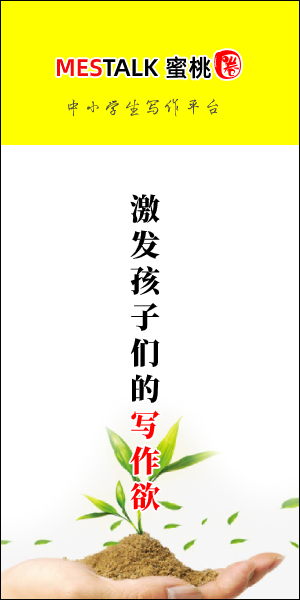中式的传统书籍装订方法是以中日朝越为主的汉字文化圈国家在从西方引进现代册装方法之前所使用的主要书籍装订手段。其包含了包括经折装、蝴蝶装、线装等在内的多种多样的装订形式。
古代中国的装帧,最早是以竹木与绳为书写材料的简牍以及以布帛为书写材料的的帛书。直到纸的发明与流行后,才出现了参考简牍与帛书形制的卷轴装。此后,又发展出龙鳞装、旋风装、经折装、蝴蝶装、包背装、线装等等。
Up until the 9th century during the mid-Tang dynasty, most Chinese books were bound scrolls made of materials such as bamboo, wood, silk, or paper. Originally bamboo and wooden tablets were tied together with silk and hemp cords to fold onto each other like an accordion. Silk and paper gradually replaced bamboo and wood. Some books were not rolled up but pleated and called , although this was still one long piece of material.
During the 9th and 10th centuries, a new book format known as "butterfly binding" appeared. This change is tied to the rise of Buddhism and woodblock printing. When Buddhist sutras were brought to China from India, they were in the form of narrow folded palm-leaf books. The accordion-fold books were easier to handle than scrolls while reading and reciting sutras. Scrolls were gradually replaced by butterfly binding (经折装), also known as sutra binding, from the Tang period onward. The advantage was that it was now possible to flip to a reference without unfolding the entire document. Woodblock prints made the new format easier by allowing two mirror images to be easily replicated on a single sheet. Thus two pages were printed on a sheet, which was then folded inwards. The sheets were then pasted together at the fold to make a codex with alternate openings of printed and blank pairs of pages. In the 14th century the folding was reversed outwards to give continuous printed pages, each backed by a blank hidden page. The next development known as whirlwind binding ( 旋风装) was to secure the first and last leaves to a single large sheet, so that the book could be opened like an accordion. During the 16th and 17th centuries, pasted bindings were replaced by stitched thread bindings.
The paper used as the leaves are usually xuan paper (宣纸). This is an absorbent paper used in traditional Chinese calligraphy and painting. Stronger and better quality papers may be used for detailed works that involve multicoloured woodblock printing. The covers tend to be a stronger type of paper, dyed dark blue. Yellow silk can be used, which is more predominant in imperially commissioned works. The cover is then backed by normal xuan paper to give it more strength. Hardcovers are rare and only used in very important books; The silk cord is almost always white. The case for the books are usually made of wood or bookboard, covered with cloth or silk and the inside is covered in paper.
卷轴装是一种较为早期的书籍制作方法。在印刷术发明以前,图书主要以抄写的方式记录在缣帛和纸张上,因此这一时期的图书基本都是卷轴装。这种形式的“书”一般采用长卷形式,阅读时展开,平时卷起。卷轴的长形纸一般是以多张纸黏在一起,或在木浆倒模时特别度身订造。因应不同书类所需的分卷方法,亦可在卷轴上刻上分段及分部的记号。在以自上而下的方向开始绘画或书写的时候,卷轴一般都被完全打开,写完相关段落后才卷起。这种装帧只能以手工方式来制作,现今这种技术通常只有在装裱书画时使用。
此外,于中国内由木简或竹简捆绑而成的简牍,亦属于卷轴的一类。有不少纸制或纺织品制作的卷轴为了更好收藏及舒卷,在两端或左端是装上长轴。
在雕版印刷普及以后,由于书版各自成块,卷轴装已不适用,古籍装帧改进为册页形式,先后出现旋风装、经折装、包背装、线装几种形式。其中线装书的形式至今仍在一些领域内被广泛使用(但此后仍有不少作品采用卷轴装,如《开宝藏》、《赵城金藏》等)。
龙鳞装是是一种流行于唐代的书籍装订方式,在卷轴装的基础上发展而成。其大致造型和外观与卷轴装相似,不同的是在较小的纸上写字,依此浮贴于卷轴装的大张纸上,状如鳞次,因而得名。
经折装,又称梵夹装,是流行于中古时东亚地区的书籍装帧方式。因常见于佛经书籍的装帧,又如同风琴状折好以便收纳及舒卷,世称经折装。现今许多佛经仍以经折装装帧。
经折装是长幅卷子改为一正一反方式折叠,并在最首页及最末页之背粘上硬纸作为书面以便保护。舒卷时与卷轴装似,多了折痕,而比卷轴装更易于收藏。 经折装的缺点是书口外露,容易散开,且经常翻阅时,书页容易断裂。经折装限制文字内容只能在纸张的单面书写或印刷。
线装是当代流传下来的传世古籍中最常见的装订方式。其早期形式可能在南宋时期就已经出现,但直到明嘉靖年间才逐渐流行起来。至清代,绝大部分书籍基本都采用这种装订方式。线装书解决了蝴蝶装,包背装易于脱页的问题,同时便于修补重订。
The method of this binding is in several stages:
After a group of books are printed, they are often put in a case. This is a cloth case that is constructed from boards that have a cloth upholstering. Traditional cloth cases are a single line of boards attached together and covered by the cloth; the insides are papered. The pile of books are placed in the middle board, and the left-hand boards wrap the left side and the front of the books, and the right boards wrap the right side and on top of the left side boards. The right side front board has the title tag pasted on the top right-hand side. The rightmost edge has a lip, from which two straps with ivory or bone tallies are connected to. These straps are pulled down the left side, where there are the loops where they are inserted to secure the whole case together.
Modern cases are much like Western ones. They are basically cuboid with an opening in one side where the books slot in. The Chinese have a separate board to wrap the books before inserting into the case.
